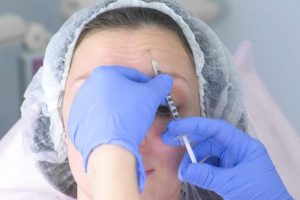FOREHEAD CONTOURING
The features of people’s face are what make them unique. As you know faces are one of the first things a person often sees. Males and females have different forehead shape. Men tend to have a masculine forehead which is a horizontal ridge of bone. While women eager to have a smoother forehead. One of the most prominent facial features that determine the gender of a person is forehead. Some women have a prominent or masculine forehead, that they can change it with this small gentle procedure. Some individuals are suffering from a receding or too-high hairline that can be fixed too. to remove the ridge, open up the appearance of the eyes, and create a more natural, softer appearance.
What Is Forehead Contouring?
It is a surgical procedure which will involve reconstructing the protruding brow bone and reshaping the orbital bones to achieve a softer, more feminine appearance. Masculine foreheads are typically more prominent than feminine ones, characterized by a wider shape and a heavy brow ridge above the eye area. Forehead contouring is usually performed to reduce these traits and increase the overall femininity of the facial structure. It is designed to give you a smoother, flatter forehead and can be performed in conjunction with a hairline restoration or brow lift for a more feminine look.
Forehead contouring surgery
Forehead contouring surgery can be done to fulfill the following:
- Improving the curve of the forehead profile by implantation
- Reducing the forehead approximately 3-5 mm by bone shaving
- Correcting a forehead bone depression
The method of performing the forehead surgery varies according to the patient’s anatomy. It usually takes up to 3 hours and done under local anesthesia. It can be carried out through the following methods:
Fat injection
The surgeon can draw fat from the patient’s body. It can be done local anesthesia. In this method, there are no scars, but the method is not permanent.
Bone cement
Most surgeons prefer to use bone cement, which is the patient’s living bone, as it is durable, strong, and easy to be adjusted. This method creates scars.
e-PTFE (Gore-Tex)
It is a synthetic substance that can be placed inside the body through delicate incisions.
Silicone sheet
The material used in this method is difficult to adjust and not flexible. That’s why it is not very popular. Also, some patients would have preferred to have a hair transplant in the new hairline, but in most cases, it is not necessary.
Type of forehead contouring
- Shaving: shaving will be suitable for those with only small bussing or a small sinus. In this method, the surgeon would burred away small amounts of bone.
- Shaving and filling: this method is suitable when the projection angle between the nose and the forehead is already satisfying. Concavity after the bossing has to be addressed and the concave area above the bossing will be filled with bone cement.
- Forehead reconstruction: the most powerful technique is this method. The surgeon will remove the anterior wall of the frontal sinus bone and remodels it for a smoother shape.
- Forehead reconstruction and filling: a combination of forehead reconstruction and some filling with methyl methacrylate
Benefits of Forehead Contouring
Forehead contouring requires both artistry and precision, which is why patients are in the right hands with us. According to achieving your desired forehead shape, this procedure also will offer other benefits such as:
- Smoother forehead
- Softer facial profile
- Increased facial symmetry
Forehead contouring recovery
Bruising and swelling around the eyes are common after the surgery. That is why a soft dressing is placed around the forehead overnight to reduce the swelling, and then it will be replaced with a bandage for about 10 days.
Stitches will be removed approximately a week after the surgery.
Loss of sensation is also common. Healing may take up to 10 months in patients.
Vigorous exercises causing sweat, like running and yoga, are not permissible for at least 6 weeks.
Washing the hair is permissible but it must be done gently.
What affects the cost of Forehead Contouring?
- Treatment method
- Technology used
- Qualifications/expertise of the specialist
- Accommodation
- The patient’s general health
Possible Risks and Complications
Forehead augmentation surgery carries some risks and in some cases just like other plastic surgeries, linked to complications, which include:
- Adverse reaction to the anesthesia used
- Infection
- Fat absorption (for patients who have undergone fat transplantation)
- Excessive fat transplanted, leading to the appearance of a puffy, unnatural appearance
- Silicon implant rupture
Result of Forehead Surgery
All of the patients almost are subjectively satisfied with their postoperative appearance. Generally, we evaluated the postoperative appearance 3 months after surgery. No major complications were encountered, such as infection, prolonged postoperative headache, delayed hematoma, or seroma. Minor complications, such as immediate postoperative hematoma, visible or palpable lateral border, asymmetry of shape, visible scars, or hair loss were also rare. Most patients who suffered and complained of minor complications accepted the results of their surgery because the minor complications had little effect on the overall postoperative appearance. Meanwhile, most patients who were discontented with the postoperative appearance due to a visible or palpable border wanted a reoperation.
What to Expect After Surgery
Forehead augmentation surgery is done on an outpatient basis, which means you will not need to stay overnight in the hospital. The procedure itself is quite quick but does require general anesthesia. Within the first few days following surgery, you can return to your normal level of activity and full healing can be expected in a week to 10 days. You may notice some swelling or bruising near your eyelids while you are healing. Your surgeon will likely have you return to have your stitches removed.
Non-Surgical Options: Forehead Fillers
If you are not sure about undergoing surgery but would still like to change your forehead, other treatment options are available. The first choice for many people is hyaluronic acids, which are frequently used to manage soft tissue augmentation. They’re effective and safe, and a simple injection makes it easy for a physician to shape your facial features. You’re most likely already familiar with some of the substances used, such as Juvéderm and Restylane. These fillers have been available for many years and have a good safety profile. It is important to note that the results do not last long, so to maintain the look you want, the injections will have to be repeated from time to time. Researchers have also started looking into the safety and effectiveness of forehead augmentation using a filler made from polycaprolactone (PCL) microspheres. In one small study, outcomes were assessed at several time periods following surgery for up to two years. The trial concluded that it is a good option in forehead augmentation as it is safe and has positive and long-lasting effects.







Leave a Reply
Want to join the discussion?Feel free to contribute!